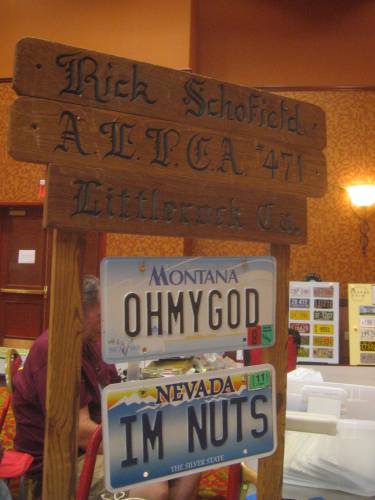
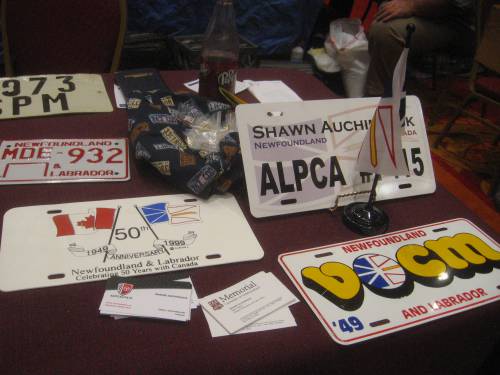
By my fourth day in Rogers, I was really starting to break a stride. I found license plates from Idaho, Louisiana, North Dakota, Texas for the marriage equality run...whittling the states needed from 29 all the way down to 11. I uncovered several other interesting subjects for my collection as well, including a "bingo board" for the front of heavy trucks and a beautiful, never-issued plate from my unlamented home state for my '85 birthyear run.
The convention hall was so big that it had taken over a day and a half for me to simply comb over every table. When I stepped away from my own table, I left instructions so that people could call me by cell phone or track me down by my outfit if they needed to find me.
No one ever tracked me down. I made very few sales at the convention, but had a few strange experiences trying. Once I came back to my table to discover that four or five plates had disappeared...as though someone had picked them up and walked out the door. Dismayed, I put together a list of what was missing and was on my way to the ALPCA secretary's table to report the "thefts" when I ran into Norm Ratcliffe, who had the table next to me. He broke the news that I had made a sale in absentia, and the money was waiting "under the old New Hampshire plate." That was a relief, though it was hardly the most satisfying experience.
![[Illinois 1925]](../plates/3t-il-33103-a.jpg)
Another strange experience came later the same day. I had a 1925 Illinois plate that I had used as a guinea pig in some plate-cleaning experiments and now had for sale at the arbitrary price of $15. Some grey-haired collector walked up to me, fondled the plate, and asked: "Would you take $5?" I paused for a moment, then acquiesced. After all, I had acquired the '25 in a bulk auction for a song, I had been lugging it around for five years, and space was at a premium.
The grey-haired collector then started to snicker. "You sold it! I didn't think you were going to do it! I should try that on other people!" And he walked away with the plate, leaving me feeling sullen and dejected.
Five minutes later, he had returned with a second five-dollar bill. "My wife said I shouldn't take advantage of people." So I sold it for $10, and I learned not to trust people to be in good faith again.
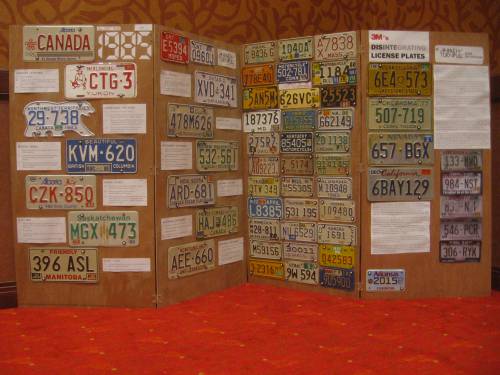
I brought two hinged two-panel displays to the Rogers meet. One was my recently-finished exhibition on "Canada in the year 1985," with plates from the provinces and territories permeated by a timeline of national events that year. The other was split lengthwise between my U.S. birthyear motorcycle run-in-progress (33 states, last I checked) and my most creative effort, an exposé on "3M's disintegrating license plates" which seemingly turn grey, blister, and lose their reflective properties if you look at them wrong. I wasn't sure whether to submit it as one display, two, or three for the purposes of judging and exhibition awards, but ultimately submitted it as one since it all ran together.
After one more lap of the convention hall with nothing extra to show for the effort, I started to shift gears into conversation. Brent Kirchner of Alberta gave me a crash course on the legions of automobiles he had owned or driven over the years, and he informed that I'd been pronouncing "Parisienne" incorrectly for years. Scott Broady found a fantastic 1981 Kentucky plate...nearly mint condition, with the short-lived Georgia-made die variation, and with an upside-down "8" in the serial for good measure...and I congratulated him profusely.
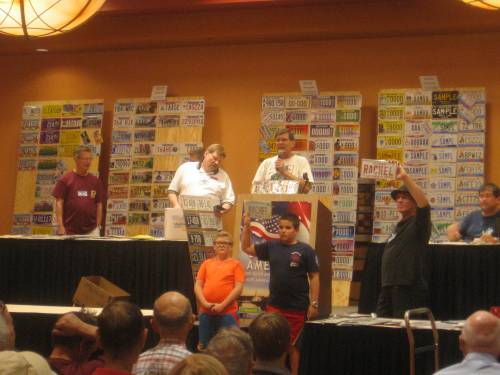
After a small group dinner in which I consumed some messy fish tacos at the Bonefish Grill across the street, I headed back to the convention center for the arguable climax of the week: The ALPCA Donation Auction; a five-hour affair in which thousands of license plates and related memorabilia were sold off to benefit the organization. The Yukon Territory government generously donated a number of expired and sample plates for the event; as did the Arkansas and Nevada DMVs.
But no, I didn't buy anything there. I saw utterly nothing on the board or in the lots that captured my fancy, so I spent my time making MST3K-style pot shots at the action with Royce Williams in the back row. Most of the entertainment came from watching the auction itself, as one collector scooped up lots upon lots of bulk plates that could generously be described as scrap metal; fool and money parted.
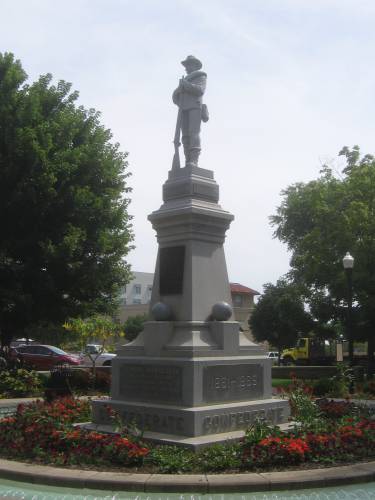
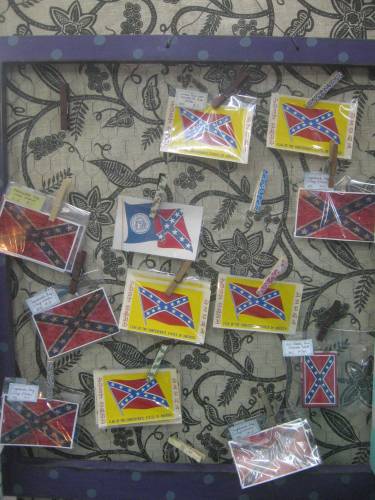
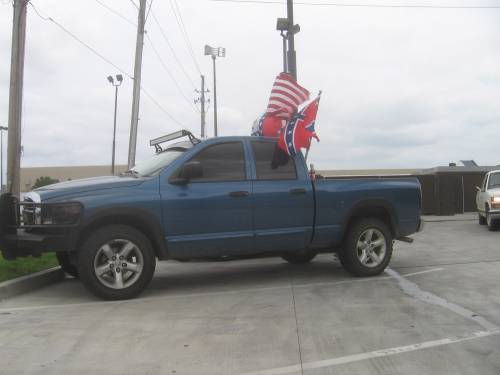
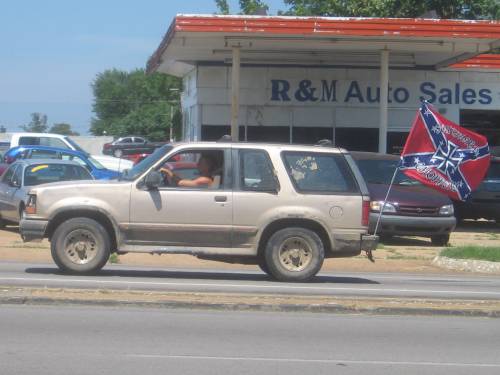
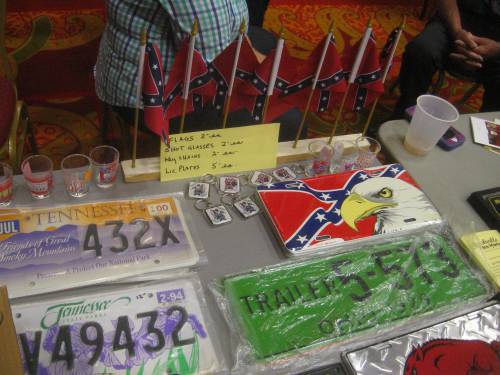
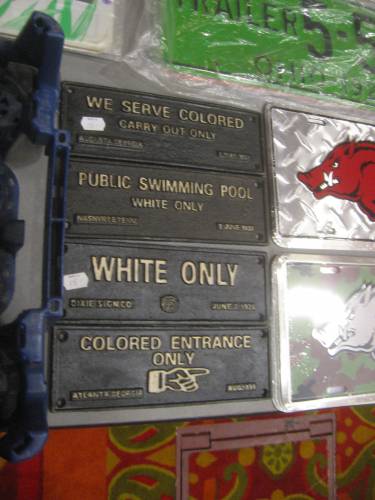












Recent Comments